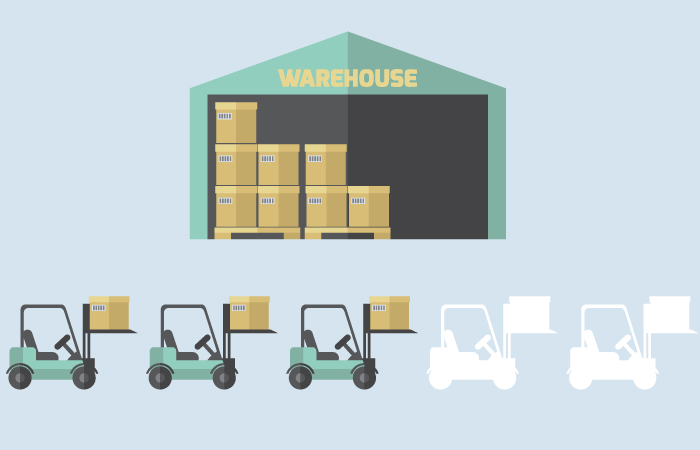We use cookies to make your experience better. To comply with the new e-Privacy directive, we need to ask for your consent to set the cookies. Learn more.
Five Tips for a More Scalable Battery Room

What does this have to do with your forklift battery room? The warehouse industry is on an upward trajectory, so now's the time to prepare your battery charging area to handle growing fleets. Here are five tips to prepare your operation for expanding battery handling capacity at a moment's notice:
-
Track battery usage to anticipate your future needs.
You can't tell where you're going if you don't know where you've been. Fleet management software like the BHS Fleet Tracker collects data on battery usage and generates detailed reports that managers can use to predict how their needs will change — over a few quarters or a few years.
By tracking how batteries are used, fleet management software helps you right-size your battery fleet — in other words, a robust tracking system will allow you to maintain an optimal number of batteries at all times. Trade publication Modern Materials Handling reports that right-sizing fleets can provide yearly savings of $100,000 or more for larger operations, and the battery room is a great place to start.
-
Use a gantry crane with a modular design.
Gantries are essential equipment in many battery rooms, and the right design can save you money in the long run. When equipped with a BHS Gantry Crane and Hardwood Battery Stations, battery rooms configured for vertical extraction are extremely scalable. Modular construction allows this system to expand without unnecessary downtime or complex installation.
-
Make a plan for electrical distribution.
A growing battery fleet will need additional chargers, and anticipating the power requirements for an expanded battery room will help your operation make a smooth transition. Rather than running new power lines from the main panel every time you expand, install Charger Power Modules on battery stands
Charger Power Modules allow you to plug or unplug battery chargers using a twist lock, making power management as simple as plugging or unplugging a lamp. This flexibility removes costly electrical work from the process of expansion.
-
Plan for future utility when choosing battery handling equipment.
Even when you upgrade to a multi-tiered Operator Aboard Battery Extractor System, older pallet-truck-mounted battery changers have their uses. A mobile battery changer can move throughout the facility, pulling batteries from stalled vehicles, or transporting batteries for maintenance tasks.
When planning battery handling purchases, consider the ways equipment can be used as your facility grows, and try not to purchase new equipment when you already have a serviceable alternative.
-
Plan for greater hydrogen gas venting requirements.
As more batteries sit charging in your stands, hydrogen levels may increase faster. If necessary, expand the ductwork on your battery room ventilation system and be ready to install extra exhaust fans if necessary.
Not only does proper ventilation keep your facility safe, it’s also essential for maintaining compliance with important safety standards such as OSHA regulation 1910.178(g)(2), which requires “adequate ventilation for dispersal of fumes from gassing batteries.”
Remember, scalability isn’t just about growth. Industries that expand can also contract, as the latest recession proved. Keeping your battery room infrastructure flexible will provide gains during times of plenty as well as those occasional lean intervals.
No matter how many lift trucks you run, matching equipment needs to material handling demands as precisely as possible can keep your operation running as efficiently as possible. Scalability pays big — especially in the forklift battery room.
References:
Gooley, Toby. “Battery Room ‘Dos and Don’ts.’” DCVelocity. Agile Business Media, LLC, 13 July 2010. Web. 20 Aug. 2015.
“Powered Industrial Trucks - 1910.178.” Occupational Safety & Health Administration. United States Department of Labor, 2006. Web. 20 Aug. 2015.
Vanasse, Harold. “Other Voices: The Impact of Right-Sizing on Battery Room Operation.” Modern Materials Handling. Peerless Media, LLC, 10 Apr. 2015. Web. 20 Aug 2015.
